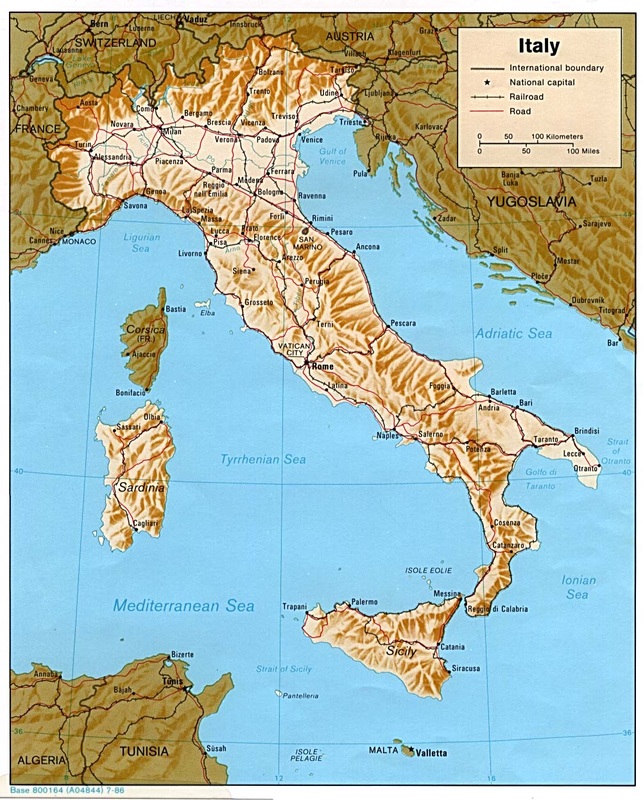Italy's shape is one of the most iconic geographical features in the world, resembling a boot standing tall in the Mediterranean Sea. It's not just a random shape; it's a masterpiece formed by millions of years of geological activity. Imagine a country shaped like a high heel boot, kicking into the heart of the Mediterranean, and you've got Italy. This unique shape has played a significant role in shaping the nation's history, culture, and even its politics.
When you look at a map, the boot-like outline of Italy stands out like no other. It's not just a geographical feature; it's a symbol of the country's identity. From the top of the boot in Piedmont to the toe in Calabria, every region contributes to the rich tapestry that makes Italy so special. The shape of Italy isn't just visually striking; it's a testament to the natural forces that have shaped the Earth over millennia.
As we dive deeper into this topic, you'll discover how the shape of Italy influences everything from climate to cuisine. This article aims to provide a comprehensive understanding of why Italy's shape matters and how it affects the daily lives of its residents and visitors alike. So, buckle up and let's explore the boot-shaped wonder that is Italy!
Read also:Ssbbw Car The Ultimate Guide To Understanding And Maximizing Your Dream Ride
Table of Contents
- Geographical Significance of Italy's Shape
- Cultural Impact of Italy's Boot Shape
- Historical Formation of Italy's Shape
- Regions and Diversity Within the Boot
- Climate Effects Due to Italy's Shape
- Tourism Around the Boot
- Culinary Influences Shaped by Geography
- Political Considerations of Italy's Shape
- Environmental Factors Influenced by Geography
- Conclusion: Embracing the Boot
Geographical Significance of Italy's Shape
Italy's boot-like shape is more than just a fun fact for geography enthusiasts; it's a critical geographical feature that impacts the entire region. Stretching from the Alps in the north to the Mediterranean islands of Sicily and Sardinia in the south, Italy's shape creates a diverse range of landscapes. The northern part of the boot is dominated by the majestic Alps, which serve as a natural barrier against the cold winds from the north. Meanwhile, the southern regions enjoy a Mediterranean climate, perfect for growing olives, grapes, and other sun-loving crops.
This diversity in geography means that Italy experiences a wide range of climates, from the snowy peaks of the Dolomites to the sun-drenched beaches of the Amalfi Coast. The boot-like shape also means that Italy is surrounded by water on three sides, giving it a unique position in the Mediterranean Sea. This has made Italy a hub for trade and travel for centuries, influencing its culture and economy in profound ways.
Impact on Landscapes
Each region within Italy's boot shape offers a distinct landscape, contributing to the country's rich biodiversity. The Po Valley, located in the northern part of the boot, is one of the most fertile areas in Europe, perfect for agriculture. Meanwhile, the Apennine Mountains, which run down the spine of the boot, provide a natural divide between the east and west coasts. These mountains are home to diverse flora and fauna, making them a haven for nature lovers.
Italy's coastline is equally impressive, with over 7,000 kilometers of shoreline offering stunning beaches, cliffs, and coves. The boot shape ensures that no part of the country is too far from the sea, making it easy for Italians to enjoy the benefits of coastal living. Whether it's the rugged cliffs of Cinque Terre or the serene beaches of Puglia, Italy's coastline is a major attraction for tourists and locals alike.
Cultural Impact of Italy's Boot Shape
The shape of Italy has had a profound impact on its culture, influencing everything from cuisine to architecture. The boot-like outline of the country serves as a constant reminder of its rich history and diverse heritage. Each region within the boot has its own unique traditions, languages, and customs, creating a cultural mosaic that is uniquely Italian.
For example, the northern regions of Italy, such as Lombardy and Piedmont, are known for their sophisticated cuisine and industrial heritage. Meanwhile, the southern regions, like Campania and Sicily, are famous for their vibrant festivals and traditional ways of life. The boot shape allows for easy travel between these regions, promoting cultural exchange and understanding.
Read also:Mattress Firm Commercial 2024 Moms Basketball The Ultimate Game Changer
Cuisine Shaped by Geography
Italy's cuisine is as diverse as its geography, with each region offering its own specialties. The shape of Italy plays a crucial role in this culinary diversity. For instance, the northern regions, with their cooler climate, are known for hearty dishes like risotto and polenta. In contrast, the southern regions, with their Mediterranean climate, specialize in lighter dishes like pasta and seafood.
The boot shape also influences the availability of ingredients. Coastal regions have access to fresh seafood, while inland areas rely more on meat and dairy products. This geographical diversity ensures that there is always something new and exciting to try in Italy, no matter where you are in the boot.
Historical Formation of Italy's Shape
The shape of Italy as we know it today is the result of millions of years of geological activity. The boot-like outline was formed by the collision of the African and Eurasian tectonic plates, creating the Alps and the Apennine Mountains. This geological activity not only shaped the land but also influenced the course of Italian history.
Throughout history, Italy's shape has played a significant role in its development. The natural barriers provided by the Alps and the Apennines have protected the country from invasions, while the Mediterranean coastline has facilitated trade and communication. The boot shape has also made Italy a strategic location for controlling the Mediterranean Sea, influencing its role in world history.
Key Historical Events
- Roman Empire: The shape of Italy allowed the Romans to control the Mediterranean, establishing one of the greatest empires in history.
- Renaissance: The diverse regions within the boot fostered innovation and creativity, leading to the Renaissance.
- Unification: The boot shape made it easier for Italy to unite as a single nation in the 19th century.
Regions and Diversity Within the Boot
Italy's boot shape encompasses 20 regions, each with its own unique character and charm. From the fashion capital of Milan in Lombardy to the historic city of Naples in Campania, each region offers something different for visitors and residents alike. This diversity is one of Italy's greatest strengths, making it a fascinating country to explore.
The boot shape ensures that no region is too far from the others, promoting cultural exchange and understanding. Whether you're enjoying the wine and cheese of Piedmont or the sun-kissed beaches of Sicily, Italy's regions offer endless opportunities for adventure and discovery.
Key Regions
- Tuscany: Known for its rolling hills and world-famous wines.
- Veneto: Home to the romantic city of Venice and the scenic Dolomites.
- Puglia: Famous for its beautiful beaches and traditional trulli houses.
Climate Effects Due to Italy's Shape
Italy's boot shape has a significant impact on its climate, creating a range of microclimates throughout the country. The northern regions, with their proximity to the Alps, experience colder temperatures and more precipitation, while the southern regions enjoy a Mediterranean climate with mild winters and hot summers.
This diversity in climate means that Italy is home to a wide variety of plant and animal species, making it a biodiversity hotspot. The boot shape also ensures that no part of the country is too far from the sea, moderating temperatures and creating a pleasant climate for most of the year.
Seasonal Variations
Italy's climate varies significantly throughout the year, with each season offering its own unique experiences. Spring brings blooming flowers and mild temperatures, perfect for exploring the countryside. Summer is the time for beach holidays and outdoor festivals, while autumn offers the harvest season and stunning fall foliage. Winter brings snow to the mountains and cozy indoor activities in the cities.
Tourism Around the Boot
Italy's boot shape makes it a dream destination for tourists, offering something for everyone. From the historic cities of Rome and Florence to the scenic Amalfi Coast and the islands of Sicily and Sardinia, there is no shortage of attractions to explore. The boot shape ensures that no part of the country is too far from the others, making it easy to plan a comprehensive itinerary.
Tourism is a major part of Italy's economy, with millions of visitors flocking to the country each year. The boot shape plays a crucial role in this, providing easy access to all the major attractions. Whether you're interested in history, art, food, or nature, Italy's diverse regions offer endless opportunities for exploration.
Top Tourist Destinations
- Rome: The Eternal City, home to ancient ruins and world-famous landmarks.
- Venice: A city built on water, famous for its canals and gondolas.
- Tuscany: Known for its rolling hills, vineyards, and picturesque towns.
Culinary Influences Shaped by Geography
Italy's cuisine is as diverse as its geography, with each region offering its own specialties. The boot shape ensures that no region is too far from the sea or the mountains, providing access to a wide variety of ingredients. This geographical diversity means that Italy's cuisine is as varied as its landscapes.
From the rich, creamy dishes of the north to the light, fresh flavors of the south, Italy's cuisine reflects its diverse geography. The boot shape allows for easy travel between regions, promoting culinary exchange and innovation. Whether you're enjoying a plate of pasta in Rome or a seafood dish in Sicily, you're experiencing the influence of Italy's unique geography.
Political Considerations of Italy's Shape
Italy's boot shape has played a significant role in its political history, influencing everything from unification to modern-day governance. The natural barriers provided by the Alps and the Apennines have protected the country from invasions, while the Mediterranean coastline has facilitated trade and communication.
The boot shape has also made Italy a strategic location for controlling the Mediterranean Sea, influencing its role in world politics. In modern times, Italy's diverse regions have led to a decentralized political system, with each region having its own government and laws. This system reflects the diversity within the boot and ensures that all regions have a voice in national politics.
Environmental Factors Influenced by Geography
Italy's boot shape has a significant impact on its environment, influencing everything from biodiversity to natural disasters. The diverse landscapes within the boot provide habitats for a wide variety of plant and animal species, making Italy a biodiversity hotspot. However, the shape of the country also makes it vulnerable to natural disasters such as earthquakes and landslides.
The boot shape ensures that no part of the country is too far from the sea, moderating temperatures and creating a pleasant climate for most of the year. However, it also means that Italy is susceptible to rising sea levels and coastal erosion, posing challenges for future generations.
Conclusion: Embracing the Boot
In conclusion, the shape of Italy is more than just a fun fact for geography enthusiasts; it's a crucial factor that influences every aspect of life in the country. From its rich history and diverse culture to its stunning landscapes and delicious cuisine, Italy's boot shape plays a significant role in shaping the nation's identity.
As you explore the various regions within the boot, you'll discover a country that is as diverse as its geography. Whether you're interested in history, art, food, or nature, Italy offers endless opportunities for exploration and discovery. So, the next time you look at a map, take a moment to appreciate the boot-shaped wonder that is Italy.
We invite you to share your thoughts and experiences in the comments below. Have you visited Italy? What was your favorite part of the boot? And don't forget to check out our other articles for more insights into the world's most fascinating countries!


